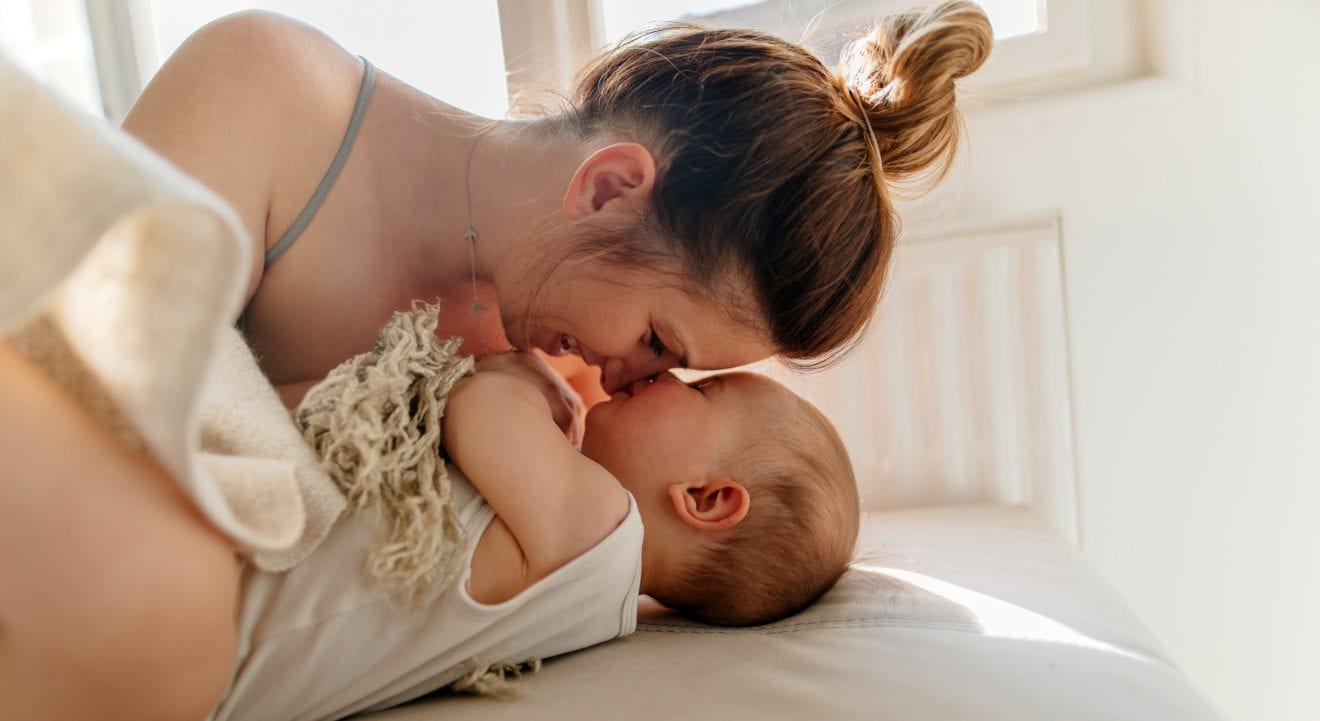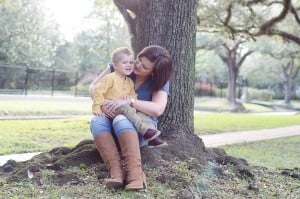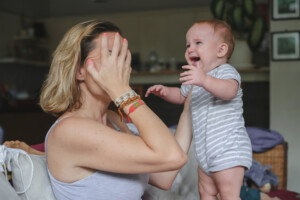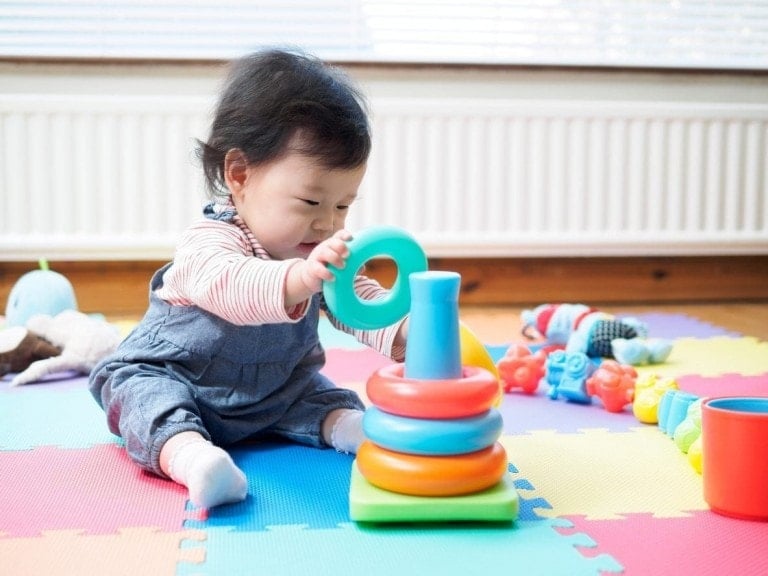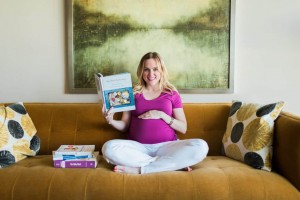This article is written by a contributor—a mother sharing her personal experience with her children and attachment parenting. She hopes that other mothers can relate and feel less alone by sharing her story. It’s important to know that this is her personal experience and does not reflect other mothers’ experiences. Every family is different. You should follow your parenting intuition and do what is best for your child.
Your first pregnancy is an exciting time. You spend a lot of time imagining what your child will look or be like, how you will be as a mom, and how your partner will be as a dad. You imagine the new family dynamic that will soon change your life forever. But after a while, you will also start to worry about some things. For instance, how exactly does one be a parent?! How does that actually work? And then, the research into parenting styles, like attachment parenting, among others, starts. Instead of becoming more clear on the topic, you feel more confused than ever.
I can tell you from experience that no amount of research will prepare you for actual parenting. I still encourage you to learn about all the methods, theories, and styles. But, in the end, you will have to use what no book or article will give you: common sense and good judgment.
We Started With the Best Intentions . . .
I started my parenting journey adamant that I would follow the tenets of the attachment parenting theory. It sounded ideal and wonderful. And for a very, very long time after having our first child, my husband and I tried our darndest to follow the attachment parenting model. However, we were frustrated, unhappy, and felt like complete failures.
After a while, we had a “come to Jesus” moment about some of the ways we felt we needed to do things differently. And we agreed that attachment parenting was something we did not agree with anymore. So we took a step back and re-evaluated. We forged our own way of parenting using common sense and good judgment. It was the best thing we did for ourselves.
While I won’t tell you that attachment parenting is “bad” or “wrong” (because it’s not), I will tell you that it may not be the best fit for your family. And that’s okay. These are why I changed my mind about attachment parenting, and I am not sorry that I decided to veer away from that parenting model.
What Is Attachment Parenting?
Attachment parenting is a philosophy that emphasizes creating a strong parent-child connection through maximal parental empathy and responsiveness and continuous bodily closeness and touch.1 The methods of attachment parenting include seven practices. They include:
- breastfeeding on demand
- co-sleeping
- babywearing
- avoidance of sleep training as the main tenants
Attachment theory is at the root of attachment parenting. It stems from psychologist John Bowlby’s studies of maternal deprivation and animal behavior research in the early 1950s.2 It has recently gained significant popularity among young urban mothers and some well-known celebrities over the past decade.
For my husband and I, practicing attachment parenting was much more difficult than we imagined. Moreover, as we struggled with the many issues and questions regarding the philosophy, we began to question whether it was as great of a parenting theory as proponents claimed. We eventually determined it was doing us and our baby more harm than good. Here’s why:
Why Attachment Parenting Theory Didn’t Work For Me
Breastfeeding on Demand Created a Habitual Snacker.
One of the tenets of attachment parenting theory is breastfeeding on demand. This basically means that a mother should breastfeed her child “on cue,” preferably before the child starts crying to be fed. It also encourages comfort nursing (nursing not for nutrition but for soothing).
I agree that breastfeeding is very important. I put it at the top of my priority list for my babies. However, I soon realized that breastfeeding on demand was not all it was cracked up to be. The theory of it encouraging attachment between parent and child seems legitimate. However, you can still securely attach to your child if you feed them from a bottle, whether breastmilk or formula. I think feeding on demand creates a habitual snacker instead of a well-fed (and therefore well-rested) baby.
My daughter, for instance, ate for only 10 minutes and then stopped. Then she would wake up 30 minutes later, needing to be fed again. She also wanted to comfort nurse ALL THE TIME. As you can imagine, this led to very unproductive days and sleepless nights for both of us. WE BOTH FARED MUCH BETTER once I put my baby on a feeding schedule. I also introduced a pacifier to help my daughter self-soothe when she didn’t need to nurse for nutrition. She took to it well, which helped us both immensely.
I also found that exclusively breastfeeding was completely impractical. My daughter eventually refused to take a bottle (ever) or let anyone else feed her. Which meant I was prohibited from leaving her even for a short time. This made me resentful and stir-crazy. We introduced a bottle (with breastmilk) with our second baby very soon after he was born. That gave me brief periods of freedom I needed to be a better mom.
Co-sleeping Prevented My Child From Learning How to Self-Soothe.
The attachment parenting theory encourages co-sleeping (your child sleeping in the same room on a different surface) and bed sharing (the child sleeps in the same bed as mom and dad). When my first child was born, I decided to bed share because she would not sleep without being near me. At first, I was happy to do it. But after nine months, I barely slept and had perpetual shoulder and neck pain. I had to sleep in strange positions to accommodate her little body. I knew it was time to try something different.
At that point, we put her in a bassinet beside the bed, but she was not having it. We tried everything to make it work. But at about a year old, we decided to put her in her room. Neither my husband nor I were getting any sleep. We were not able to be intimate or have any alone time. Both of us were tired, cranky, and at our wit’s end.
We decided to put her in her room. But once there, she had trouble going back to sleep after waking. She didn’t have my body or my breast by her side to soothe her back to sleep. By bed-sharing and then co-sleeping, I felt we had conditioned her to depend entirely on my presence to sleep well. Frankly, I thought this was unhealthy.
So we decided to gently sleep train her (discussed more below). It only took about a week of training to get her to sleep independently in her room. Since then, my daughter has been an excellent sleeper. I believe our choice to put her in her room saved my husband’s and my sanity. It also brought intimacy back into our relationship and taught our daughter that sleeping in her own space was good.
Babywearing Was Not Essential to Bonding With My Child.
Attachment parenting proponents claim that babywearing helps to create a secure attachment for your child by encouraging more skin-to-skin time, among other things. While babywearing is a helpful tool for most moms, in my opinion, I do not think it’s essential to form a secure parent/child attachment.
First, you can bond with your baby without needing to carry them all the time. Sitting on the floor playing with them or across from them at the table and making eye contact creates the same bond. Further, I think that constant babywearing can be detrimental to fostering your child’s need to explore the world independently and grow into healthy independence. Finally, I disagree that setting your child in a swing or bouncer so that you can do the dishes, make dinner, or go to the bathroom will cause emotional or mental damage to your child.
I chose to babywear until my kids began walking because it was easier for me. It allowed me to use my hands freely. It also helped when I had a toddler and an infant. However, I also regularly used a stroller, a bouncer, a swing, or just some toys on the floor to keep my kiddo occupied while I got stuff done. My kids learned they didn’t need to be held all the time to be happy. They learned to play and explore independently. They also knew I would be there in a heartbeat if they needed me. And I was a better mom and wife because I could get stuff done.
Sleep Training Helped My Child and Me.
One of the most controversial issues that attachment parenting advocates encourage is avoiding all kinds of sleep training. Proponents of attachment parenting argue that sleep training a child, especially the “cry-it-out” method, can cause brain damage and impair the parent-child bond. This argument, however, is not based on science.3 Studies done on infants who had been sleep trained showed the opposite: the effect on the babies’ brains and stress levels was not negatively affected, and the sleep training taught the babies how to sleep independently.4
After doing our best to avoid sleep training per the attachment parenting guidelines, my husband and I concluded (without reading the science of it at the time) that it was ludicrous. After over a year of sleepless nights and napping issues, we finally decided to sleep-train our daughter. It took us less than a week to get her to sleep (and sleep well) on her own using a hybrid cry-it-out method. Training our kids to sleep was a lifesaver for us. Especially me. Studies show that training your babies reduces the risk of maternal depression. I can attest that I was a better, happier, more engaged, and loving mom when my kids started sleeping alone in their room.5
The Bottom Line Is to Do What’s Right for YOU.
Attachment parenting was the wrong choice for my family and me. While I still believe that the theory sounds lovely and ideal, its reality falls short in many respects, in my opinion. Ultimately, my family used bits and pieces of several parenting methods and our good sense to create our own unique style. I believe it was the best choice we made in this crazy gig called parenting.
